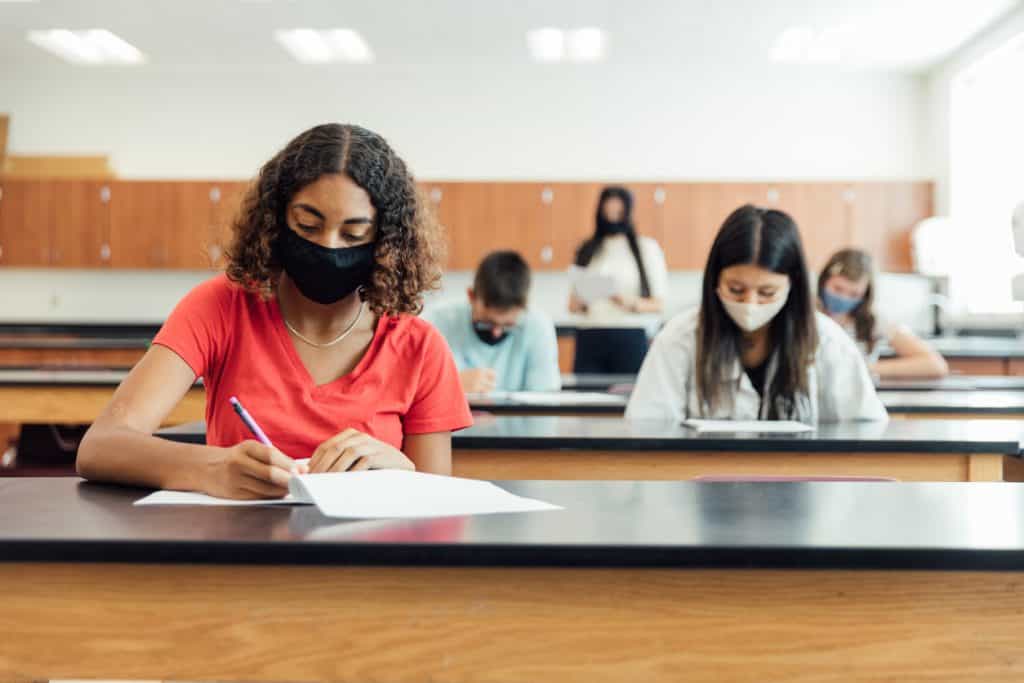
So many of the established routines of our shared civic life have been suspended. While we wait hopefully for a vaccine that appears to be just around the corner, new COVID cases are spiking, lockdowns continue, unemployment benefits are expiring, and most of our schools remain closed to in-person learning. Our lives feel suspended.
And yet, the school year rolls on with millions of students struggling to keep pace under extremely challenging conditions. While we celebrate the extraordinary efforts of our teachers and school administrators to adapt schooling to the conditions of a global pandemic, there are still big decisions ahead. Educators will need data to inform those decisions—and there’s no better source than statewide summative assessments.
Indeed, our country’s forced experiment in distance learning is not serving all students equally and threatens to leave an entire generation of students behind. The digital divide that leaves rural and lower-income students without access to laptops and high-speed internet is denying millions of students a quality education. Yet somehow, we continue to wait, life suspended, hoping federal policy makers will recognize this inequity and fund schools’ safe return to in-person instruction as soon as possible.
Failing Grades
Report cards from this year’s first grading period confirm that remote instruction is not working equally for all students. The Houston Independent School District, Chicago Public Schools, and districts across the country report a significant increase in failing grades, especially among African American and Latinx students, who are most likely to live in neighborhoods that have seen the highest COVID-19 rates.
Grenita Lathan, Houston’s interim superintendent, said 42 percent of students failed two or more classes in the first marking period, up from about 11 percent in a typical year. The district offered only online classes during its initial six-week grading period.
What is clear … is that we continue to struggle with the issue of equity. Our African American, Latinx and students in priority groups have not been served well enough by remote learning to experience success. While there is room for improvements in remote learning, we must also push hard to open our classrooms so we can ensure greater access.
While classroom grades are one indicator, they are not a consistent one. Local school boards set grading policies, with many districts adopting a “do no harm” approach, either lowering grading standards or giving only pass/fail grades while teachers and students adjust to online instruction. That may make sense for individual students, who shouldn’t be punished for the inadequate instruction they are receiving, but it doesn’t provide consistent information about how students are doing and what they have or have not learned during this tumultuous time.
Even standardized assessments administered locally provide an inconsistent picture of the impacts of COVID on student learning, as districts have unequal ability to pay for those tests, resulting in aggregate results that skew along income levels and associated demographic lines. Recent reports that students showed minimal loss in reading performance this fall as compared to fall 2019 are likely inaccurate, as the fall 2020 results did not include 25 percent of the original students—students who were likely most impacted by COVID disruptions.
That is why states and districts need reliable, comparable data to measure COVID’s impact on learning. Students are not being served equally and states and districts have a moral and statutory responsibility to identify those differences and direct resources to help support those most in need.
Tool for Equity
The statewide summative assessment is the best tool to provide that quality of data. Many organizations committed to equity in education agree. In a letter to Education Secretary Betsy DeVos, 19 organizations urged the U.S. Department of Education not to waive requirements that states administer statewide assessments this spring.
“The challenges posed by this crisis only underscore the value of collecting and reporting on a standard measure of student performance,” they wrote. “Leaders should not have to continue to steer recovery efforts in the dark, and families and communities should be able to access the information they deserve about how schools are serving all students.”
And many parents agree: A recent FirstView™ Presidential Election Post-Election survey conducted in November by Heart+Mind Strategies found 75 percent of people generally and 69 percent of parents support year-end assessments to understand the impact COVID-19 has had on students’ opportunity to learn.
Not surprisingly, I believe statewide assessments are a critical tool to ensure all students—especially students of color most impacted by COVID, English language learners, and students with disabilities—are provided the support and resources they need to master grade-level learning and stay on track to become college and career ready. This year, more than ever, states need quality data to address inequities in the opportunities that students have to learn.
Overcoming Challenges
But I also understand the technical and logistical challenges posed by administering a statewide assessment in a pandemic, with many students still learning at home. Here is what we at New Meridian are doing to help the states we support get the data they need to determine COVID’s impact and direct resources accordingly:
- Flexibly supporting state decisions on test length. We are providing options for the states we support to customize this spring’s assessment to best gather the data they need, including options to modify test length.
- Supporting at-home testing. While testing in school is highly preferred because students have the support of test proctors, stable technology, and a quiet setting, millions of students may still be learning from home this spring and states and districts need data on how well they are keeping up with grade-level learning expectations.
Remote testing is a solution, though, like most things in a pandemic, there are also several challenges. Research is mixed on whether students do better or worse when taking assessments at home. Students may do better if they get help from their parents or look up answers on the Internet. On the other hand, students may not perform their best if they don’t have a quiet testing environment, have inadequate technology, or there’s no one available to provide instructions and support them on how to take the test.
Testing experts and policy makers rightly worry about drawing incorrect conclusions about students’ actual performance because of such external factors. We plan to work with our states that offer at-home testing to detect differences in student performance that may be caused by remote testing. We are also identifying analyses, based on historical data, that could be run to confirm the stability of the test and its ability to support conclusions about COVID’s impact across student groups, districts, and schools. These post-administration analyses will be critical to ensure states are drawing appropriate conclusions from this year’s data.
- Accommodations. We are providing assessments that include needed accommodations, even in a remote testing setting.
While we are taking steps to make our tests an appropriately valid measure of learning this year, the biggest factor will be whether students had the opportunity to learn the material. Test scores will likely be lower, but they won’t be uniformly lower, and those differences will be strongly associated with the quality of the online instruction students experienced.
This year of all years, data should be used to identify which schools have successfully adopted new practices that are working well with diverse student groups, and which schools have struggled. States and districts must be able to learn, adjust, and direct recovery resources toward schools demonstrating the greatest need—before it’s too late.


